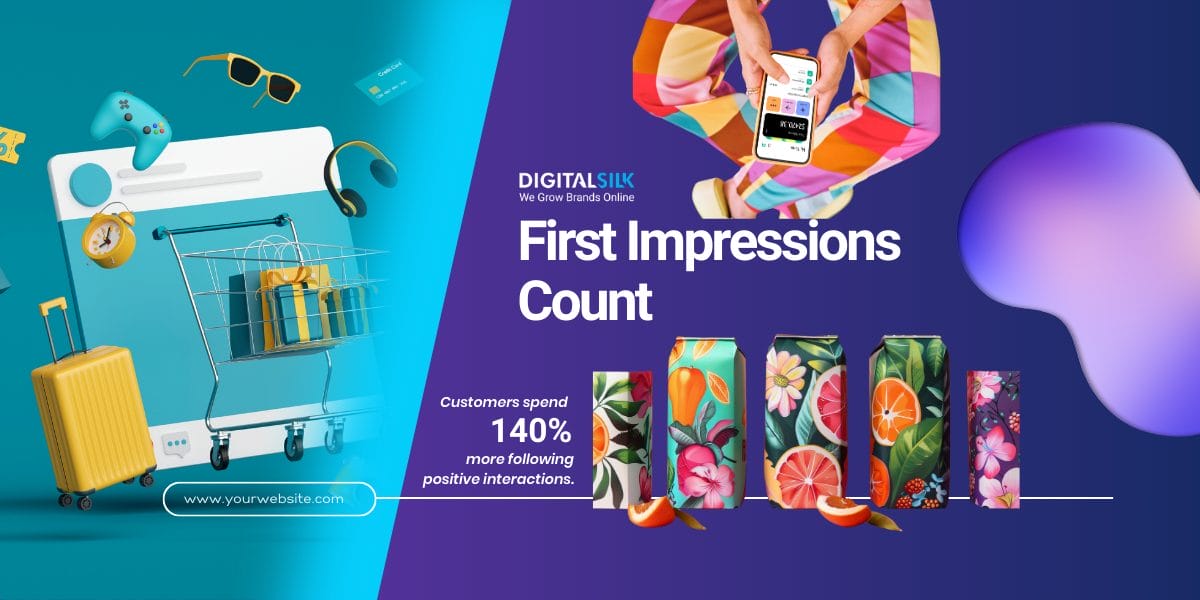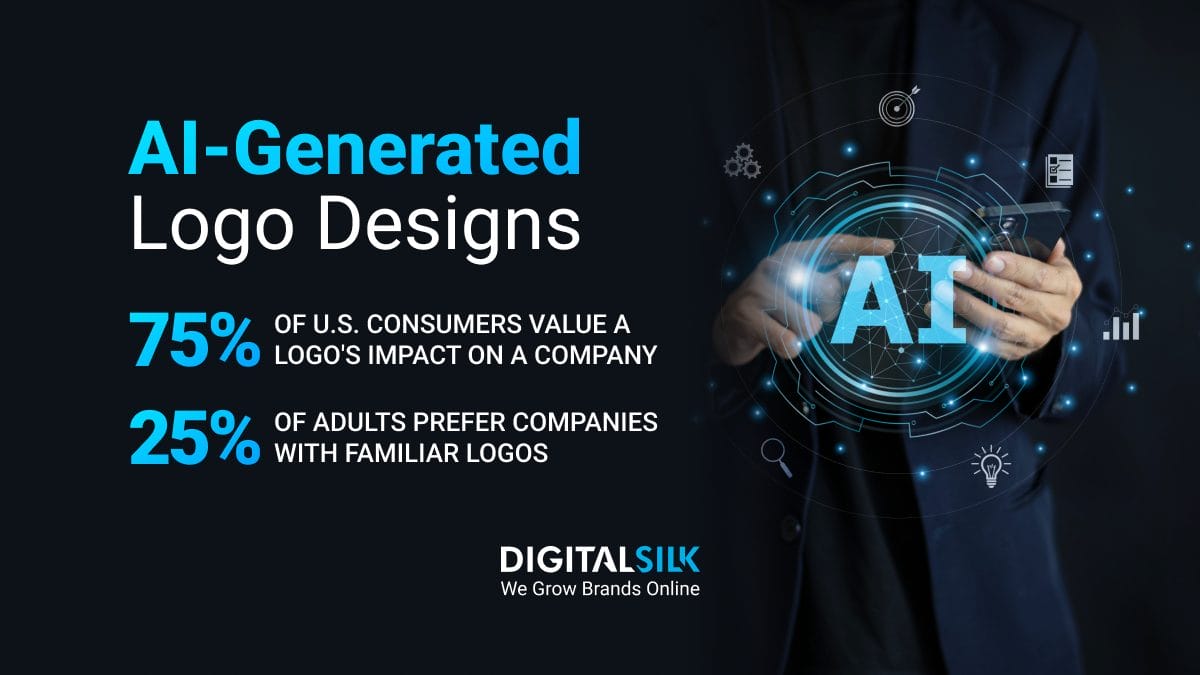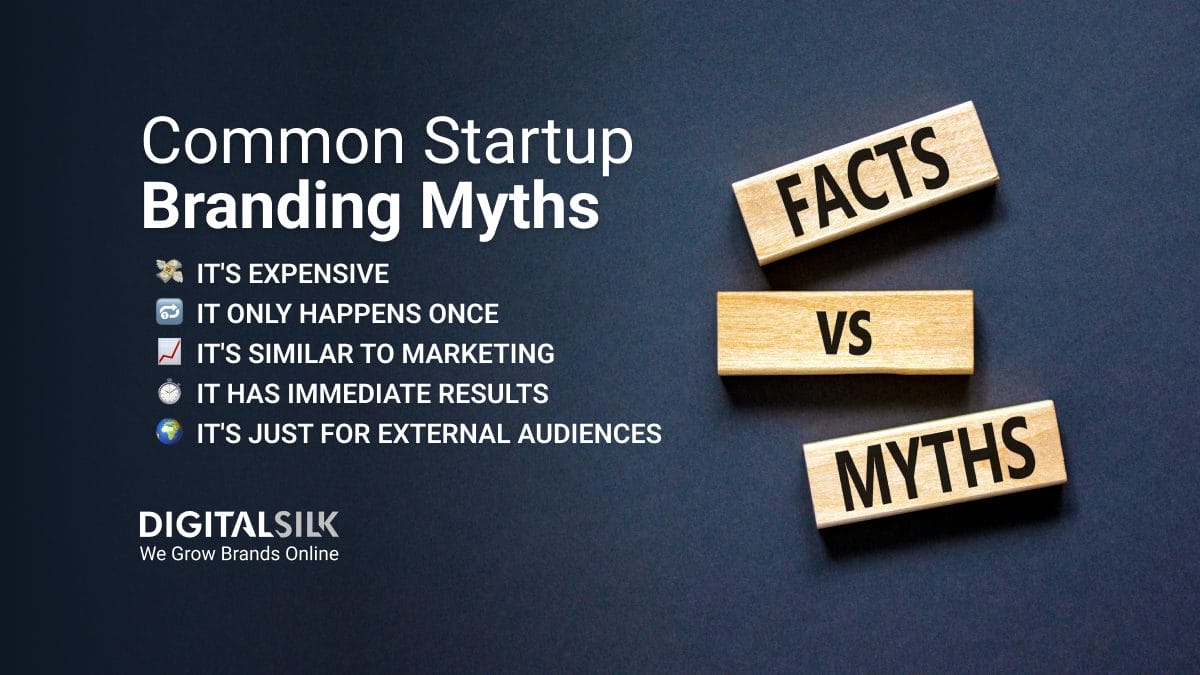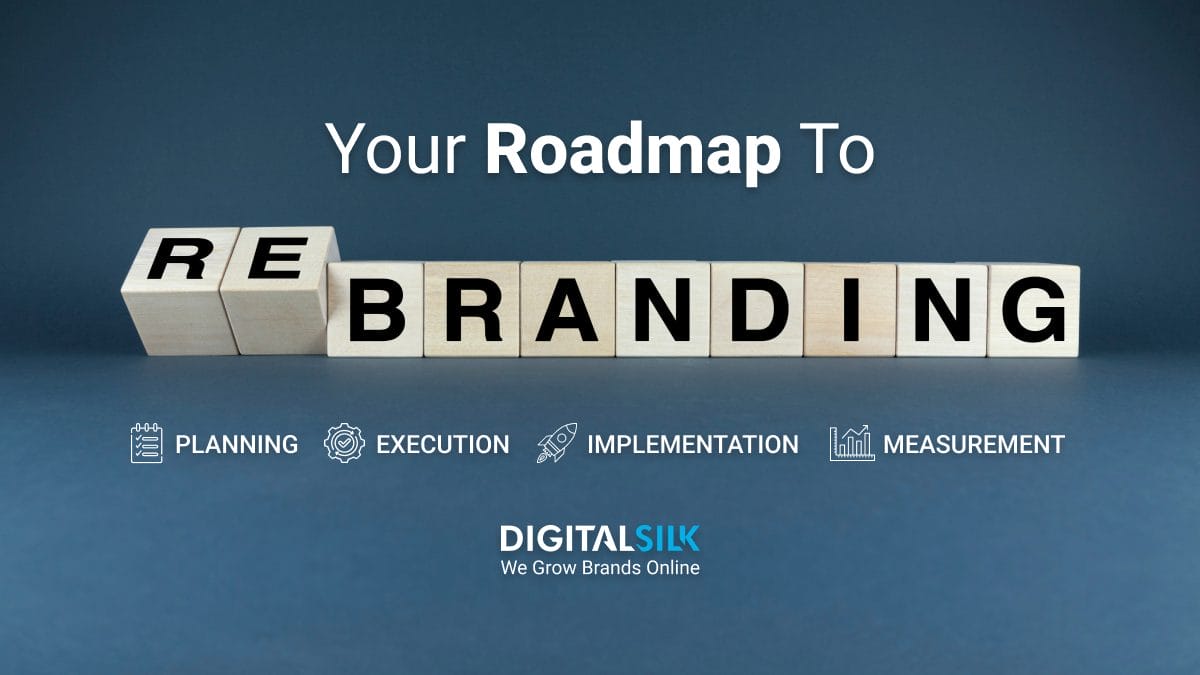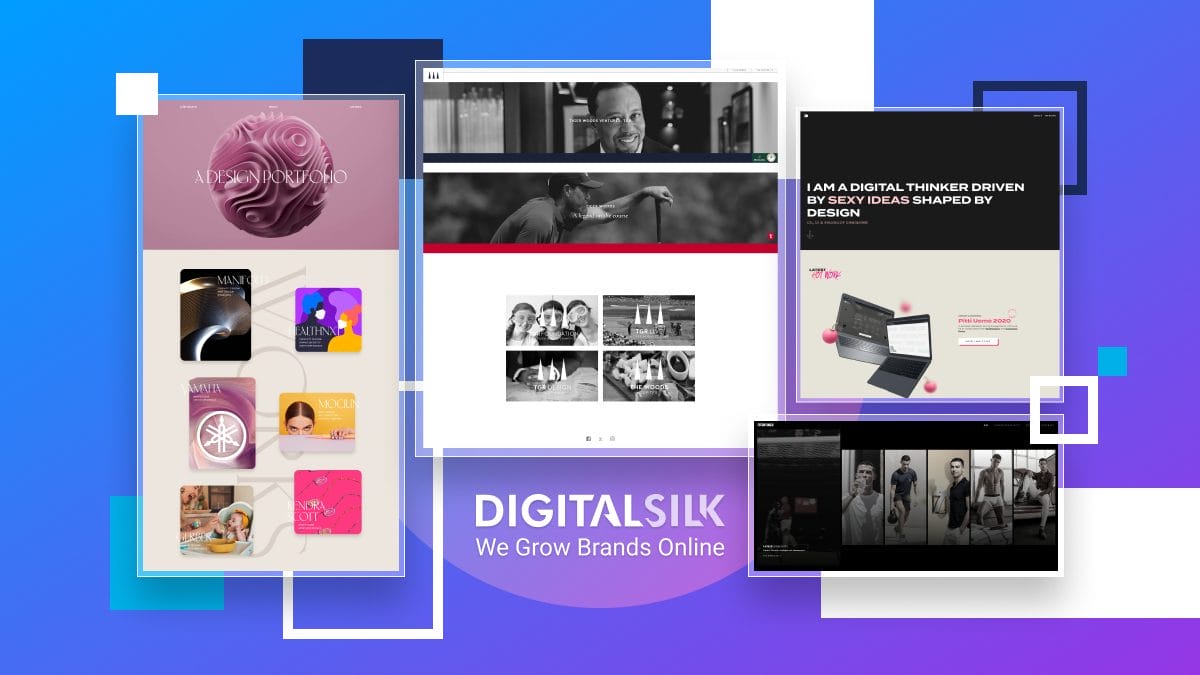How many brands could you name off the top of your head when asked on the spot?
You might think of a few that stand out due to their memorable color palettes, engaging copy, or striking visuals. However, most brands tend to blur together in your mind without leaving a lasting impression.
While global advertising spending is expected to reach $974 billion in 2025, gaining consumer attention is more than just investing more in your branding or marketing strategies.
In this post, we’ll explore five great branding examples, examine the basics of eCommerce branding and explore several effective strategies to boost brand recognition and recall.
5 eCommerce Branding Examples For Your Inspiration
Practical inspiration from real-life examples is essential for developing your signature strategy.
We’ve compiled some of the best examples of e-commerce branding that not only showcase beautiful designs but also effectively communicate their value to their target audience.
These e-commerce websites demonstrate cohesive aesthetics, seamless user experience and features that promote conversions.
1. Black Diamond Equipment
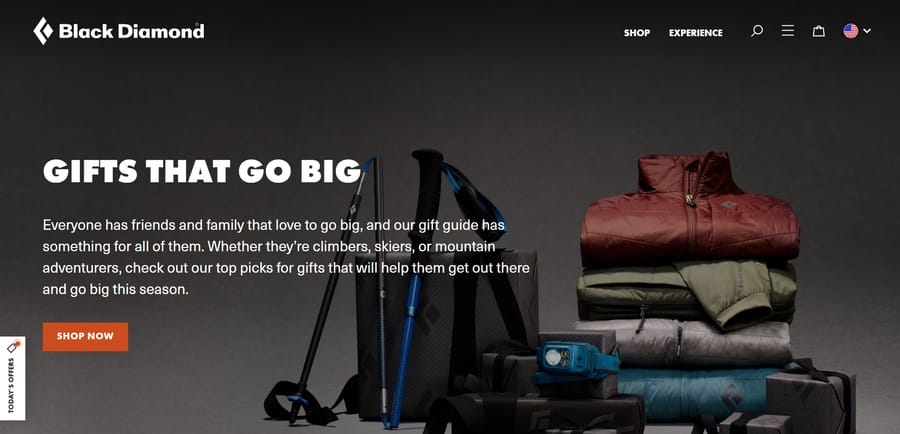
Black Diamond Equipment’s eStore features impactful on-page copy that reflects the brand’s adventure-loving, thrill-seeking, and challenge-defying persona.
The home page includes attractive and on-brand visuals with detailed descriptions, strategically placed calls-to-action and a striking dark background to balance the site’s visual hierarchy.
2. Welly
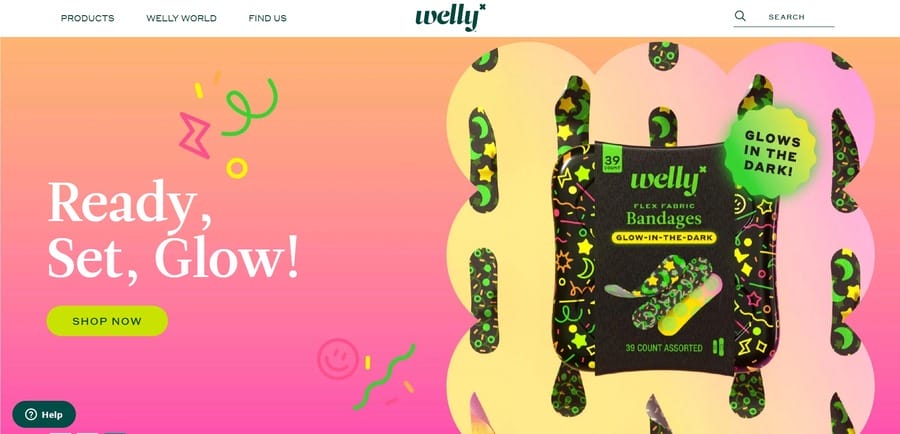
Welly’s branding strategy centers around a playful, colorful and fun-loving identity that resonates with its younger target audience.
The brand’s unique selling point is prominently displayed in the store’s hero section, showcasing a collection of eye-catching and vibrant bandages and first aid kits, some of which glow in the dark.
Visitors can hardly have any doubts about what Welly sells — its storytelling is clear, consistent and effective.
3. Fishwife
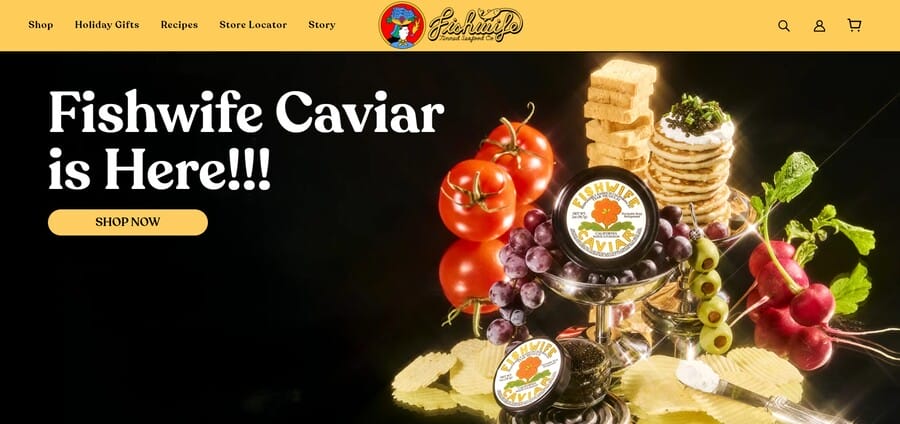
Canned seafood is hardly a glamorous product to sell, but Fishwife upscales its branding efforts through a bold color palette, curved typography and retro-looking imagery.
This nostalgic-flavored approach guides customers through a selection of bestsellers, with saturated hues, detailed product descriptions, shell-shaped pop-ups and quirky illustrations and animations.
What sets this eCommerce store apart is its willingness to take risks and experiment with branding strategies, ultimately resulting in an easily recognizable and memorable identity.
4. Beauty Pie
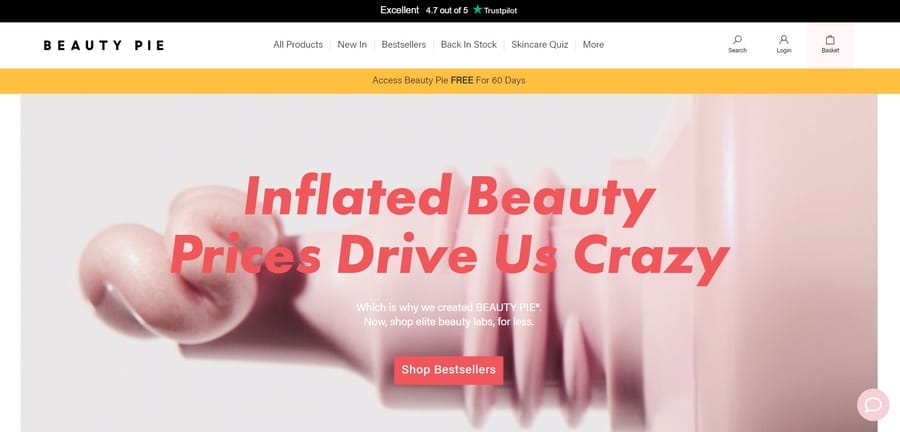
Beauty Pie is a cosmetics subscription service with an interesting play on words for its brand name — a cutie pie with a love for reasonably priced beauty products.
Aside from its memorable name, the on-page copy reflects the brand’s stance on inflated prices in the beauty industry, which is a common challenge for its target demographic.
Users can quickly take a skincare quiz to determine suitable products for their concerns, browse through the store’s well-organized product listings and review some of its bestsellers all in one place.
Not to mention the sneaky Trustpilot reviews at the top of the page to boost the brand’s credibility, recognition and client-centric practices.
5. Olipop
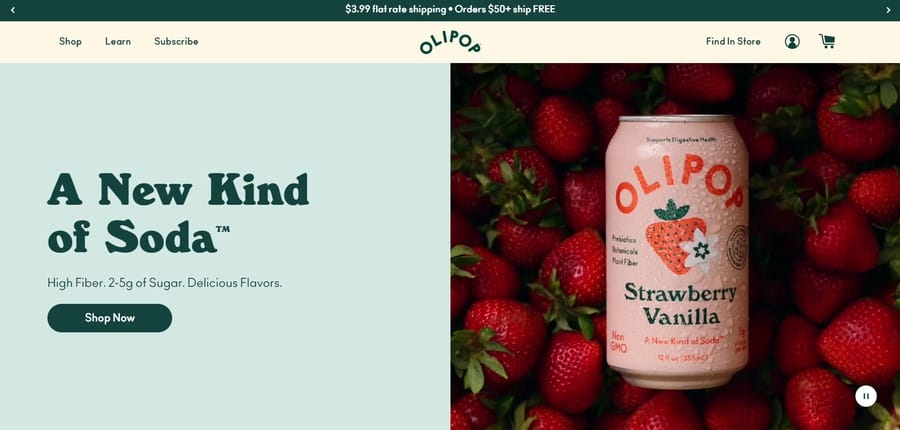
Olipop aims to create somewhat healthier versions of classic childhood soda flavors.
The brand capitalizes on its light and aesthetically pleasing color palette that emphasizes its flavor-focused approach and highlights its unique properties.
Olipop’s bright, fun and dynamic imagery encourages thirsty shoppers to take a sip of its refreshing soda collection and indulge in some nostalgia while supporting their health goals.
Digital Silk’s eCommerce Branding Example
Digital Silk’s end-to-end branding services helped Rollink, a global collapsible luggage brand, to successfully launch its products in the U.S. market, enhancing its presence alongside European and Asian markets.
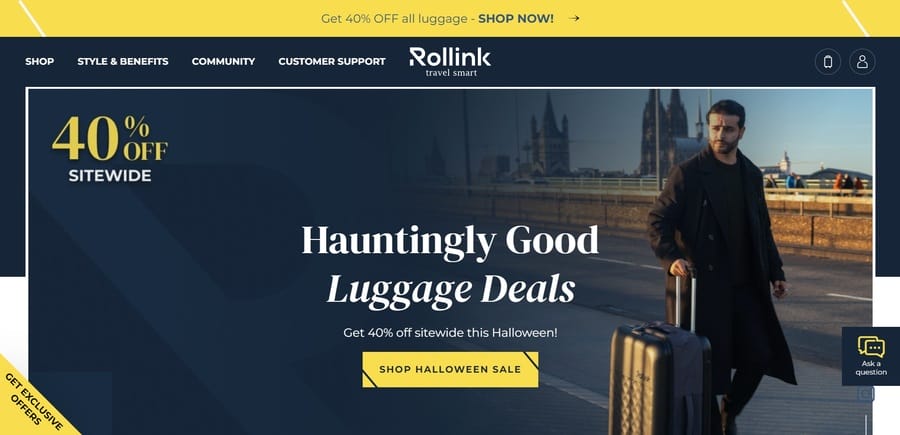
Our branding team evaluated the saturated and competitive U.S. market to identify relevant keywords to rank for, focusing on search intent and difficulty.
Digital Silk targeted customers based on their flying tendencies and living habits and offered engaging and educational content on social media and PPC campaigns.
We highlighted key products on the brand’s website redesign and used compelling on-page content to reflect Rollink’s unique value proposition and core messaging.
Our design team used Rollink’s brand strategy to build a user-friendly, responsive interface with intuitive navigation, stunning visuals and signature animations.
How To Build An eCommerce Brand
Customers tend to spend 140% more after having positive interactions compared to those with negative experiences.
Therefore, the value of your eCommerce brand significantly increases when you provide personalized experiences and unique benefits tailored to your target audience.
Step 1. Define Your Target Audience
A notable 82% of marketers say that having relevant data and insights into their target audience is the key to boosting sales and increasing brand recognition.
You can define your target demographic by assessing audience trends in the macro-environment, determining competitor targeting strategies or examining your own data and analytics.
Brands should understand who they’re speaking to so they can continuously inform, educate, entertain, engage and ultimately convert.
This goes hand-in-hand with continuous growth and improvement by adapting to changing market trends and competitor landscapes.
Take Intenz as an example — the brand embraces anti-aging skincare and tailors its branding strategies to cater to its more mature audience.
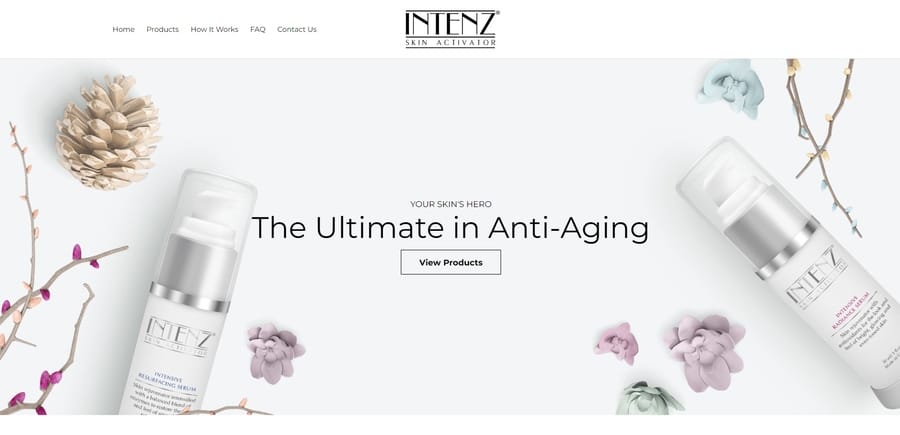
Step 2. Determine Your Unique Value Proposition
Your unique value proposition lies at the intersection of what your customers want, how your brand’s greatest strengths cater to those needs and how you differ from the competition.
This sweet spot is your biggest selling point — it allows you to create meaningful connections with your customers, foster long-term loyalty and increase brand recognition.
Results-focused branding for eCommerce stores can help you rank higher for benefits-driven keywords and deliver relevant and engaging content for consumers.
One simple but effective eCommerce branding strategy is to optimize your unique value proposition and prominently display it as the main heading on your home or landing page.
This way, visitors can clearly see the benefits your brand has to offer and quickly determine whether they align with their needs and pain points.
Step 3. Research Your Competition
It’s difficult to launch an eCommerce store with minimal competition, but conducting thorough market research can help you identify competitor gaps or opportunities.
Examining their websites, product selections, pricing strategies and customer reviews can provide valuable insights into the strategies that yield the most results.
Additionally, keeping an eye on your competition can help you identify emerging trends or changes in consumer preferences.
You may notice that a competitor is gaining traction by offering free shipping or implementing a new marketing tactic, which you can use in your strategies to remain relevant in the crowded marketplace.
For example, Chubbies had some undeniable competition when the store entered the men’s shorts industry.
But the brand focused its efforts on a more niche market — the so-called Friday at 5 pm males who’ve embraced a laid-back lifestyle.
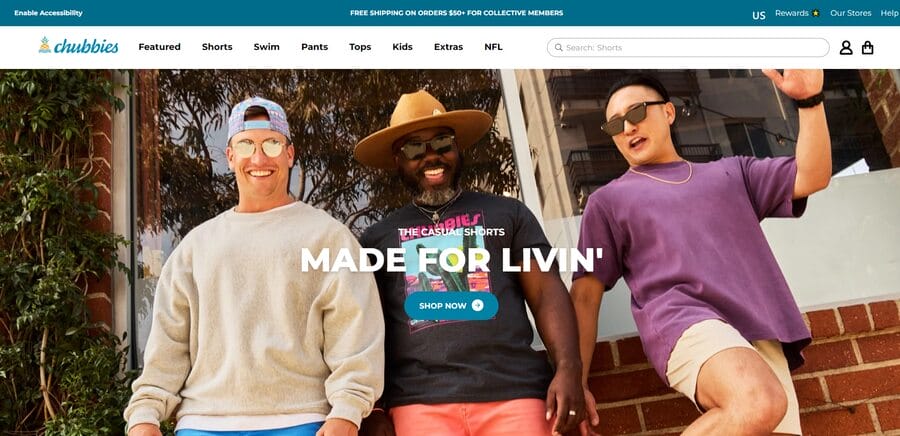
It speaks directly to its very specific target demographic, i.e., men who want a cool pair of shorts to take with them on a casual weekend getaway.
Chubbies’ brand positioning is clear, effective and authentic, which drives consistent business growth and increased customer engagement.
Step 4. Tell A Compelling Story
There’s more to your brand than just the obvious transactional benefits — the goal is to curate a genuine and engaging narrative that effectively communicates your values, beliefs and mission statement.
Brand storytelling helps you foster authentic connections, drive revenue growth and build a tight-knit community.
For instance, Rothy’s deviates from the conventional path of simply selling its products — the brand has an entire page dedicated to its sustainability efforts that narrates a story of ethical production, eco-friendly materials and social responsibility.
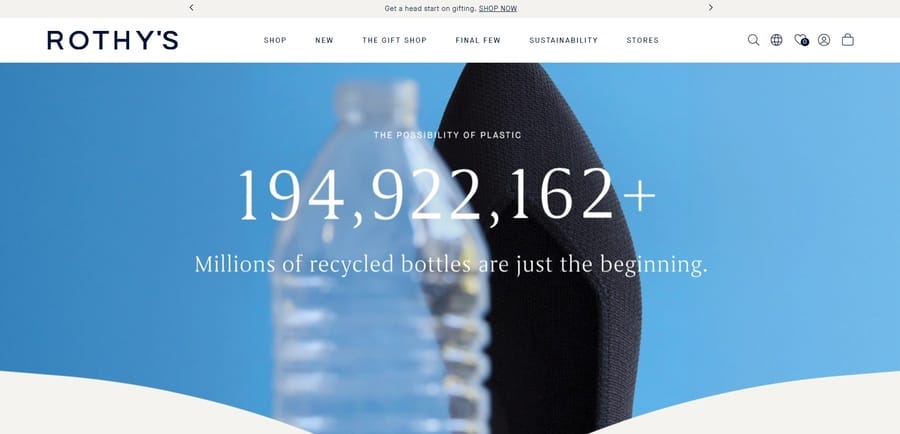
Additionally, your customers turned brand ambassadors can be your biggest content creators by default.
They can share unique, memorable and powerful stories about how your brand solved their problem or challenge and motivate others to try your product or service.
Step 5. Create Brand Guidelines
Brand guidelines contain a set of instructions on how to display your brand identity.
This set of assets includes detailed logo descriptions, color palette specifics to maintain visual consistency across all touchpoints, image specifications and photography banks, brand voice guidelines and sample collaterals.
Your guidelines ensure cross-channel consistency, improve project efficiency and boost awareness and recognition through brand-specific messaging.
Step 6. Focus On Authentic Growth
Your eCommerce brand should constantly monitor what your consumer base says about your offerings through customer reviews, surveys, direct outreach and social media.
This way, you can adjust your products or services to remain competitive, boost engagement rates and improve customer satisfaction.
Additionally, displaying client testimonials can help boost your credibility and authenticity in the industry.
Since 88% of users trust testimonials from other consumers as much as they trust recommendations from personal contacts, highlighting positive feedback can facilitate organic brand growth and increase conversions.
Step 7. Improve Customer Service
89% of consumers are more likely to recommend a brand after a positive experience. How well you handle micro-interactions, such as inquiries or complaints, can significantly impact brand recognition and performance.
You can also use audience segmentation to offer personalized recommendations, analyze consumer data and purchasing habits to tailor your strategies and offer special discount or promotions to regular customers.
For instance, Nordstrom prides itself on its stellar customer service, with dedicated live chat support, easy returns and tailored styling advice.
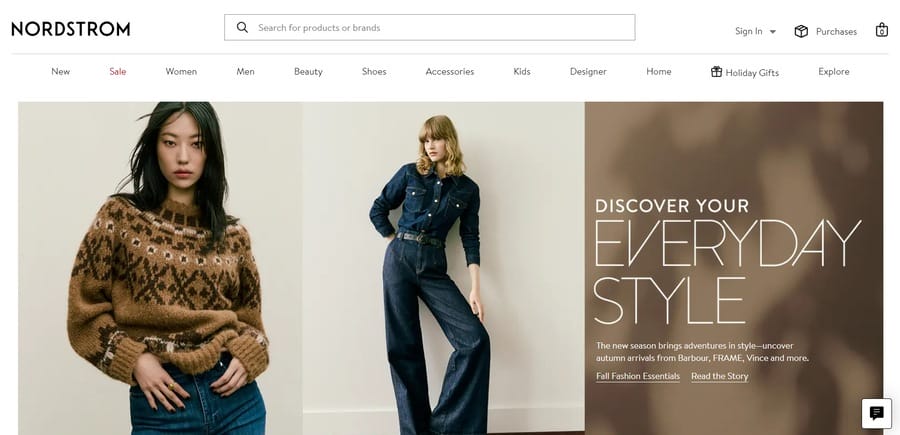
Step 8. Design A User-Friedly Website
There are 27 million eCommerce websites worldwide, which fuels the competition for attention and drives the need for visually appealing and user-centric designs.
The key lies in creating cross-platform and cross-device compatibility so users can experience seamless website functionality regardless of where they open it.
Focus on simple navigation, fast loading times, straightforward checkout processes and clear calls to action.
Regularly updating content, adding new features and optimizing for search engines can also improve website traffic and increase conversions.
Step 9. Consider Email Marketing
Email marketing is an underrated aspect of most brand strategies — it offers a direct line of communication to re-engage existing customers and attract new ones as your business expands.
You can boost consumer trust by facilitating consistent interaction, personalized messaging and tailored offers.
Analyze past browsing behavior, shopping preferences and consumer demographics to effectively target their needs and pain points.
Write clear and concise emails with catchy subject lines, include exclusive offers, discounts or coupons and use eye-catching calls-to-action to direct users’ attention to the desired action.
Step 10. Give Back To The Community
77% of users feel more motivated to purchase from brands that are determined to make the world a better place.
Giving back to the community through charitable donations, volunteer work or partnerships with non-profit organizations can improve your brand image and attract socially conscious consumers.
There’s no better example of eCommerce social responsibility than Patagonia — a global supplier of outdoor and adventure gear.
The brand takes a strong stance on environmental issues, supports numerous eco-conscious initiatives and regularly donates part of its profits to sustainable causes.
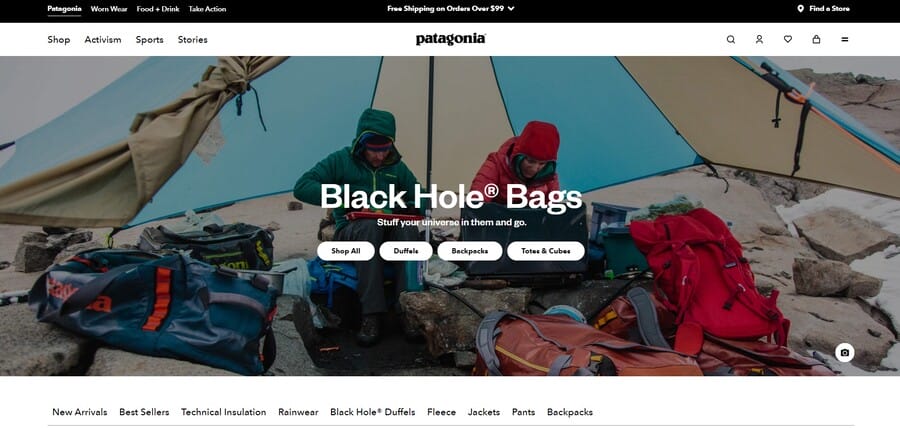
Grow Your eCommerce Brand With Digital Silk
Not sure how to reach a wider audience and increase sales with your eCommerce brand?
Digital Silk’s experienced team of branding strategists, marketing specialists, website designers and developers analyze current market trends, consumer behavior and your existing assets to create results-driven and high-converting branding campaigns.
Our end-to-end solutions help grow brands online, with our key areas of expertise including:
- Brand strategy
- Naming and logo design
- Custom web design and development
- eCommerce development
- Magento and Shopify development
- Digital marketing
We take full ownership of every project, offer consistent and transparent communication and deliver measurable results throughout our partnership.
Contact our team, call us at (800) 206-9413 or fill in the Request a Quote form below to schedule a consultation.
"*" indicates required fields


